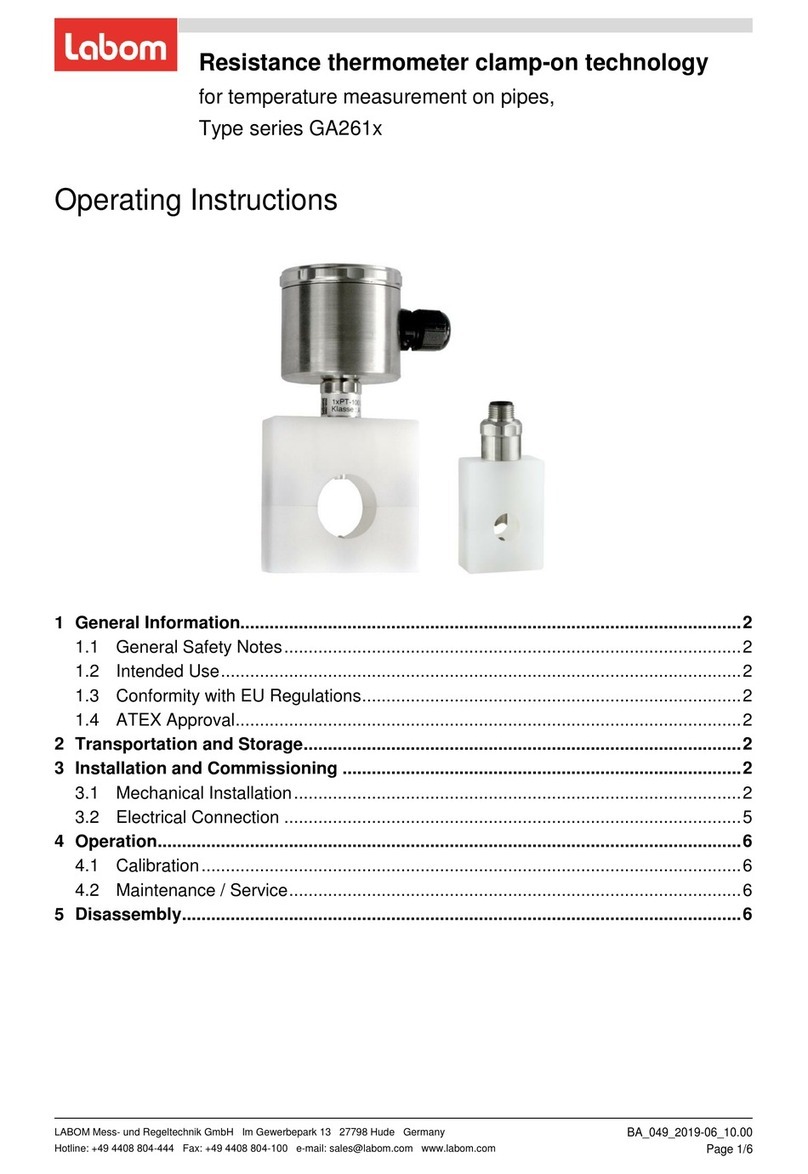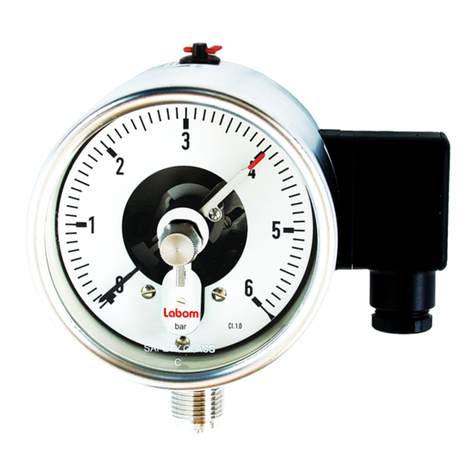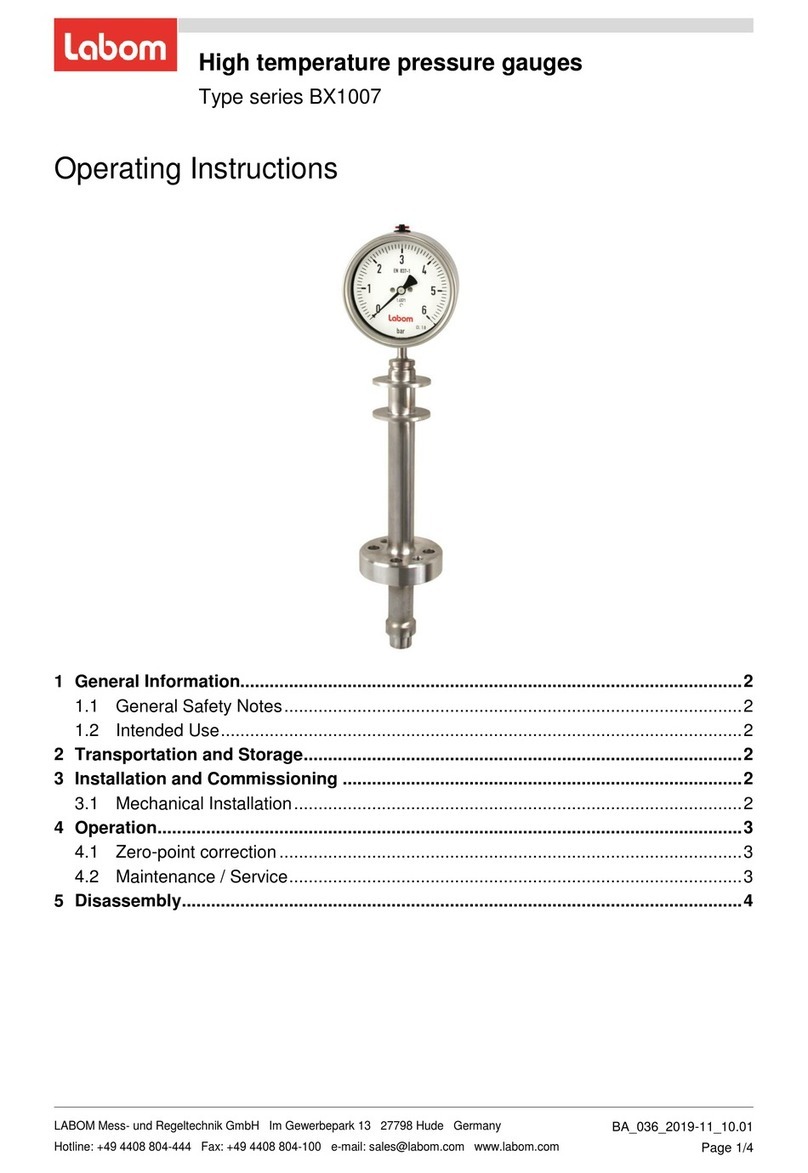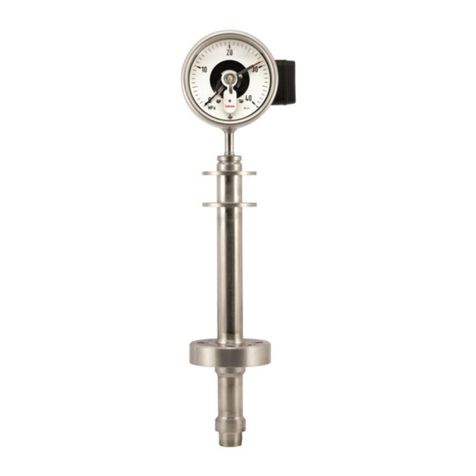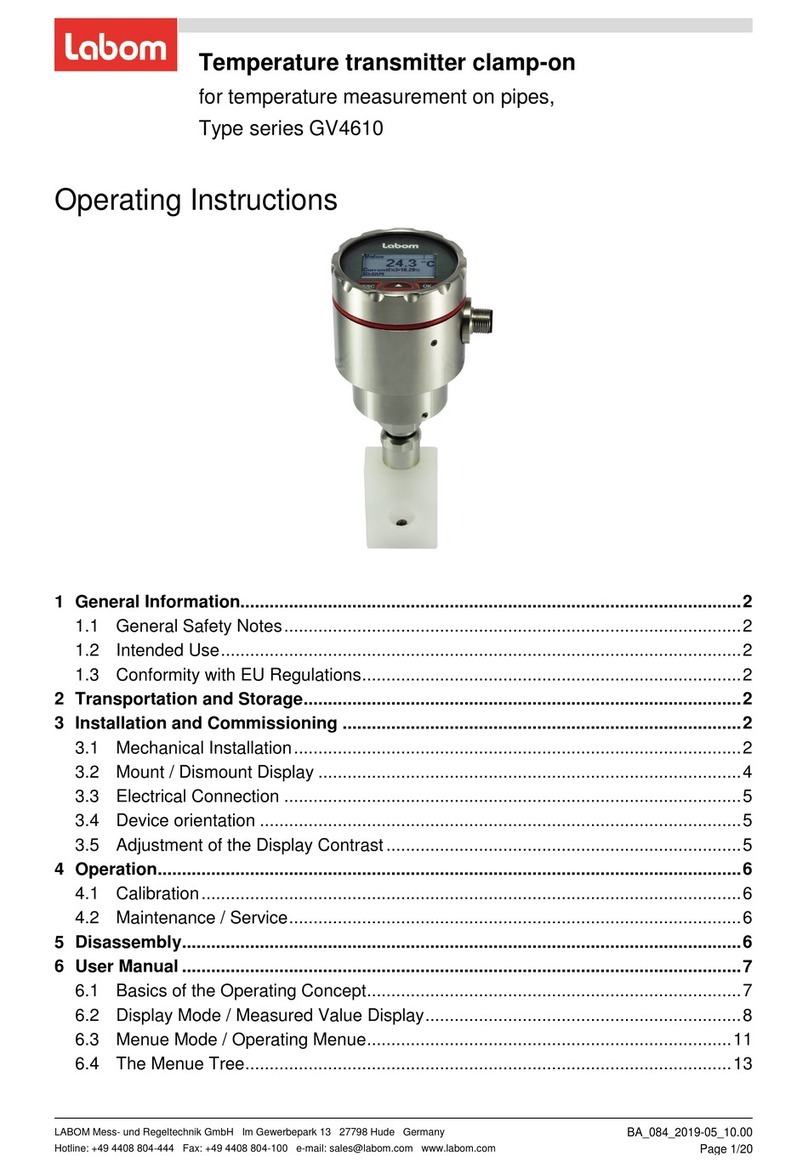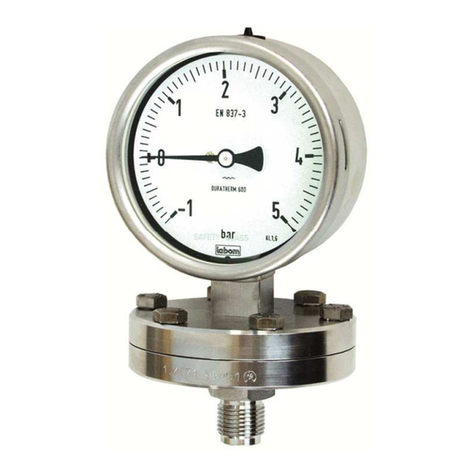
BA_008_2019-11_10.01 Pressure gauges
1 General Information
This document contains necessary information for the proper installation and use of this
device. In addition to this instruction, be sure to observe all statutory requirements, appli-
cable standards, the additional technical specifications on the accompanying data sheet
(see www.labom.com) as well as the specifications indicated on the type plate.
1.1 General Safety Notes
The installation, set up, service or disassembly of this device must only be done by
trained, qualified personnel using suitable equipment and authorized to do so.
Warning
Media can escape if unsuitable devices are used or if the installation is not
correct.
Danger of severe injury or damage
Ensure that the device is suitable for the process and undamaged.
1.2 Intended Use
The device is intended to measure pressure of gases, vapors and liquids as specified in
the data sheet.
1.3 Conformity with EU Regulations
The CE-marking on the device certifies its compliance with the applicable EU Directives for
placing products on the market within the European Union.
You find the complete EU Declaration of Conformity (document no. KE_053) at
www.labom.com.
1.4 ATEX Approval
If you purchased a device with ATEX approval, please refer to the accompanying docu-
ment XA_005 for ATEX-relevant information.
2 Transportation and Storage
Store and transport the device only under clean and dry conditions preferably in the origi-
nal packaging. Avoid exposure to shocks and excessive vibrations.
Permissible storage temperature: -40…70 °C
BH5xxx, BH8xxx and S3 models with case filling
Permissible storage temperature: -20…60 °C
3 Installation and Commissioning
Ensure that the device is suitable for the intended application with respect to pressure
range, overpressure limit, media compatibility, temperature range and process connection.












